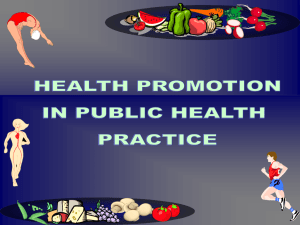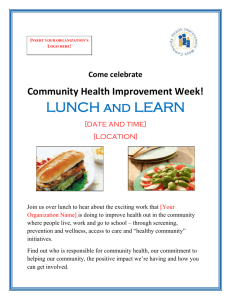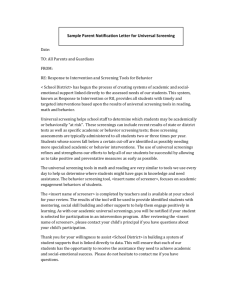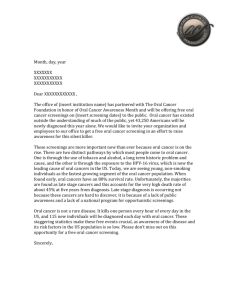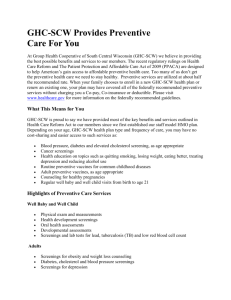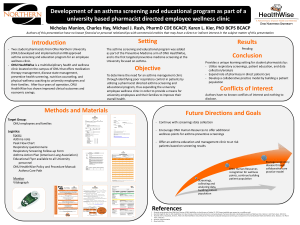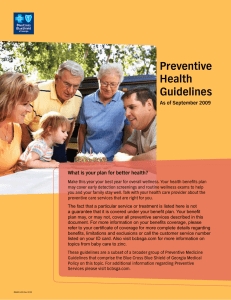An educational intervention study evaluating a pharmacist-directed skin screening program
advertisement
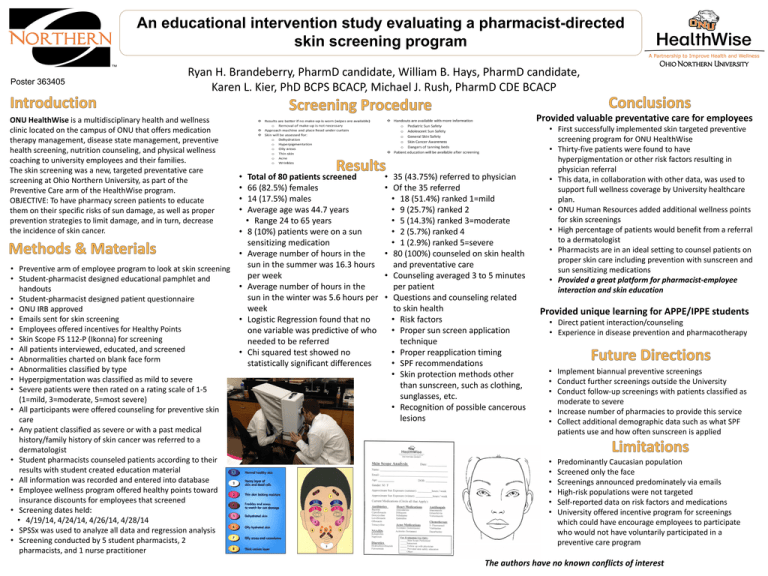
An educational intervention study evaluating a pharmacist-directed skin screening program Poster 363405 Ryan H. Brandeberry, PharmD candidate, William B. Hays, PharmD candidate, Karen L. Kier, PhD BCPS BCACP, Michael J. Rush, PharmD CDE BCACP ONU HealthWise is a multidisciplinary health and wellness clinic located on the campus of ONU that offers medication therapy management, disease state management, preventive health screening, nutrition counseling, and physical wellness coaching to university employees and their families. The skin screening was a new, targeted preventative care screening at Ohio Northern University, as part of the Preventive Care arm of the HealthWise program. OBJECTIVE: To have pharmacy screen patients to educate them on their specific risks of sun damage, as well as proper prevention strategies to limit damage, and in turn, decrease the incidence of skin cancer. Provided valuable preventative care for employees • • • • • • • Preventive arm of employee program to look at skin screening • Student-pharmacist designed educational pamphlet and handouts • Student-pharmacist designed patient questionnaire • ONU IRB approved • Emails sent for skin screening • Employees offered incentives for Healthy Points • Skin Scope FS 112-P (Ikonna) for screening • All patients interviewed, educated, and screened • Abnormalities charted on blank face form • Abnormalities classified by type • Hyperpigmentation was classified as mild to severe • Severe patients were then rated on a rating scale of 1-5 (1=mild, 3=moderate, 5=most severe) • All participants were offered counseling for preventive skin care • Any patient classified as severe or with a past medical history/family history of skin cancer was referred to a dermatologist • Student pharmacists counseled patients according to their results with student created education material • All information was recorded and entered into database • Employee wellness program offered healthy points toward insurance discounts for employees that screened • Screening dates held: • 4/19/14, 4/24/14, 4/26/14, 4/28/14 • SPSSx was used to analyze all data and regression analysis • Screening conducted by 5 student pharmacists, 2 pharmacists, and 1 nurse practitioner • • • Total of 80 patients screened 66 (82.5%) females 14 (17.5%) males Average age was 44.7 years • Range 24 to 65 years 8 (10%) patients were on a sun sensitizing medication Average number of hours in the sun in the summer was 16.3 hours per week Average number of hours in the sun in the winter was 5.6 hours per week Logistic Regression found that no one variable was predictive of who needed to be referred Chi squared test showed no statistically significant differences • 35 (43.75%) referred to physician • Of the 35 referred • 18 (51.4%) ranked 1=mild • 9 (25.7%) ranked 2 • 5 (14.3%) ranked 3=moderate • 2 (5.7%) ranked 4 • 1 (2.9%) ranked 5=severe • 80 (100%) counseled on skin health and preventative care • Counseling averaged 3 to 5 minutes per patient • Questions and counseling related to skin health • Risk factors • Proper sun screen application technique • Proper reapplication timing • SPF recommendations • Skin protection methods other than sunscreen, such as clothing, sunglasses, etc. • Recognition of possible cancerous lesions • First successfully implemented skin targeted preventive screening program for ONU HealthWise • Thirty-five patients were found to have hyperpigmentation or other risk factors resulting in physician referral • This data, in collaboration with other data, was used to support full wellness coverage by University healthcare plan. • ONU Human Resources added additional wellness points for skin screenings • High percentage of patients would benefit from a referral to a dermatologist • Pharmacists are in an ideal setting to counsel patients on proper skin care including prevention with sunscreen and sun sensitizing medications • Provided a great platform for pharmacist-employee interaction and skin education Provided unique learning for APPE/IPPE students • Direct patient interaction/counseling • Experience in disease prevention and pharmacotherapy • Implement biannual preventive screenings • Conduct further screenings outside the University • Conduct follow-up screenings with patients classified as moderate to severe • Increase number of pharmacies to provide this service • Collect additional demographic data such as what SPF patients use and how often sunscreen is applied • • • • • • Predominantly Caucasian population Screened only the face Screenings announced predominately via emails High-risk populations were not targeted Self-reported data on risk factors and medications University offered incentive program for screenings which could have encourage employees to participate who would not have voluntarily participated in a preventive care program The authors have no known conflicts of interest
